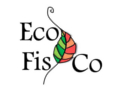La contaminación del suelo es un problema generalizado en el sudoeste de Europa que tiene efectos severos para la biodiversidad y la salud humana. Con el objetivo de recuperar los suelos, el proyecto PhytoSUDOE promoverá el uso de una técnica novedosa por parte de propietarios y gestores de terrenos contaminados: la fitogestión. Se trata de una alternativa poco investigada hasta ahora que resulta beneficiosa para el medio ambiente y rentable, a través del cultivo de plantas no alimentarias que absorben la contaminación o inactivan los agentes contaminantes del terreno.
El objetivo general de PhytoSUDOE es avanzar en la gestión de espacios degradados y su restauración a través de técnicas novedosas de fitorremediación que promuevan la biodiversidad, mejoren la funcionalidad integral de los ecosistemas y permitan el uso sostenible de los recursos.
El principal resultado será el establecimiento y monitorización de una red de emplazamientos contaminados/degradados sometidos a métodos novedosos de fitogestión, para demostrar el potencial de las fitotecnologías para la restauración ecológica. Los emplazamientos están situados en áreas protegidas y no protegidas, pero todas de gran calidad medioambiental y diversidad tanto geográfica, como climática y ecológica. La implementación de fitogéstion en estos emplazamientos resultará en mejoras en la calidad y funcionalidad de los suelos. Se conseguirá, así mismo, un aumento en la concienciación y conocimiento por parte de los grupos y agentes implicados (autoridades públicas y órganos gubernamentales; organizaciones implicadas en protección del ambiente, conservación de biodiversidad y restauración ecológica; público en general; comunidad científica; sector industrial o usuarios finales) del potencial de la fitogestión de emplazamientos degradados para la remediación de los contaminantes, la conservación de la biodiversidad y el suministro de servicios de los ecosistemas.
El proyecto PhytoSUDOE demostrará el potencial de la fitogestión bajo un rango amplio de contaminaciones diferentes, condiciones medioambientales y usos del suelo. Una adecuada fitogestión requiere un enfoque multidisciplinar y un intercambio de conocimientos entre expertos de diferentes campos. En este sentido, el consorcio PhytoSUDOE está formado por expertos en ecología microbiana y meso/macrofauna edáfica, ecología vegetal y ecofisiología, agronomía, geología y ciencias del suelo, planificación del paisaje, y evaluación de riesgo. En este proyecto, se mejorarán las bases de datos disponibles, los protocolos de buenas prácticas y los métodos para evaluar la eficiencia y Sostenibilidad de las opciones de fitogestión. PhytoSUDOE contribuirá así a la consecución de los objetivos de la UE relacionados con la remediación y protección de los suelos, al objeto de garantizar la sostenibilidad funcional del suelo como recurso natural clave para nuestra sociedad.

